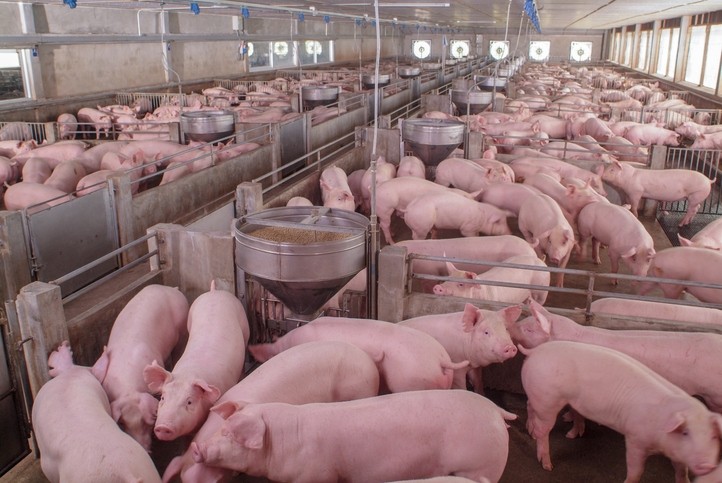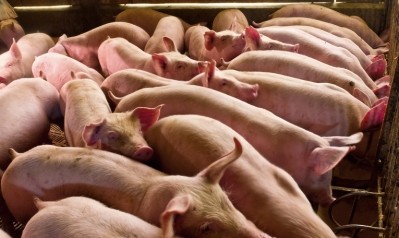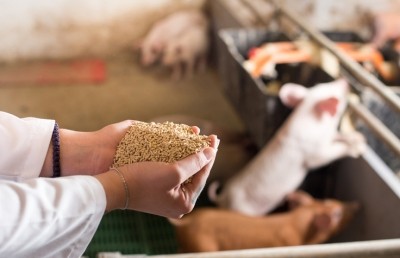Study: limiting amino acids controls pig growth

A university study has lent credence to a feeding approach that was adopted by some US pig producers during March/April, when reduced packing house capacity caused backlogs of pigs on farms.
“A number of packing facilities in the US were struggling to stay open or were operating at 50-60% capacity because of Covid. This slowdown in the packing sector meant producers were having to cut back on the number of pigs they were harvesting,” K-State swine nutritionist Joel DeRouchey told FeedNavigator.
He explained that this situation created a backlog of pigs ready to go to market. If animals were kept on the farms longer, they put on more weight and became too heavy to fit into the packers’ weight range parameters.
“We had to market heavier pigs first, but more pigs were coming up behind them. We had to look at a way of slowing down the last 50-70lb of weight gain,” said DeRouchey.
Amino acids have the answer
Previous research is conclusive that reducing amino acid levels below the pig’s requirement impacts on the animal’s growth rate. Therefore, with no time to waste, Kansas State swine nutritionists prescribed an amino acid restricted diet.
However, there were questions that needed answering.
“There was a complete lack of information on modern genetics and how dramatically reducing amino acid levels would impact their growth rate as well as feed efficiency. Our nutritionists had questions and we had questions. It was research that needed to be done in a timely manner,” said DeRouchey.
He continued: “Producers had to take that approach very quickly before there was research information available. That was why we conducted controlled studies to understand more precisely the impact of the diets being fed.”
356 pigs, four diets
The study, involving 356 pigs, tested the effect of four different diets over a 44-day finishing period. These included a diet whereby pigs were fed a normal diet for the first 28 days followed by a corn-based diet for the final 14 days, which DeRouchey said was typical of the practice being implemented by farms to slow growth.
“To achieve maximum amino acid restriction, all intact protein sources (soybean meal) were eliminated – pigs were fed 97-98% ground corn with vitamins and minerals,” he said.
All pigs started at 196lb. Pigs fed a normal finishing diet throughout weighed in at 276lb after 44 days; pigs fed a normal finishing diet for the first 28 days followed by a corn-based diet for the final 14 days weighed 262lb; pigs fed an amino acid restricted diet (29% less lysine) with reduced soybean meal for the entire period weighed 260lb; and pigs fed an amino acid restricted diet (29% less lysine) with reduced soy meal for the first 28 days followed by a corn-based diet for the last two weeks weighed 250lb.
“These findings demonstrate the effectiveness of amino acid restriction in helping producers to slow the growth of pigs,” noted DeRouchey.
He was keen to emphasize that slowing the growth at this late stage did not impact on the animals’ welfare or development.
“A large proportion of pigs across the US went on these diets. Their welfare was not compromised in any way; they simply grew slower. They still had full access to feed and we provided all the vitamins and minerals they needed for healthy development,” said DeRouchey.
Follow-up study
The Kansas State University researchers are currently nearing completion of a second trial to determine how growth rates are affected when pigs are put back onto a normal diet after an amino acid restricted diet.
“The packing industry recovered fairly rapidly; most are back to 95-100% normal production. So what producers now need is for pigs to switch from a ‘slow’ diet back to a normal diet,” said DeRouchey.
As to whether the findings of the first study will be useful in future, DeRouchey said: “While we are not in a crisis right now, there are concerns about the large number of pigs we will have to slaughter this fall - we could be in a situation again where producers need to slow the growth of their pigs. The study also serves as a good benchmark for how pigs react to these different diets.”















